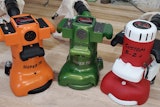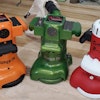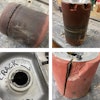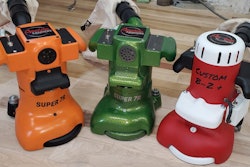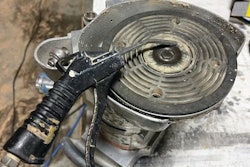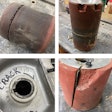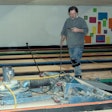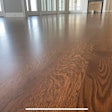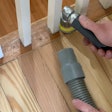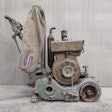
The idea of one day having to run your beloved floor sanding equipment on a generator instills a sense of dread for many. The typical laundry list of concerns certain to arise includes:
Am I really going to be able to make this thing work? How do I know I am renting the right generator? Is my sander going to run properly and provide satisfactory sanding results? Am I going to risk damaging my machine?
Many choose to walk away from such a job, or, even worse, they are "trapped" into this situation because they did not realize a generator would be needed until sanding day. The truth is that if the right generator is obtained and run properly on the job site, chances are very good the power fed into your sanding equipment is at least as good, if not better, than the average power normally encountered when a generator is not needed.
Here are four things to bear in mind when renting a generator for powering your sanding equipment, namely, your big machine.
1) Make sure you have enough power. On average, it is going to take a generator of at least 8–10 kW to give you a power hub that most closely resembles what you are already accustomed to when running your big machine in a modern American home. For commercial use, especially if you are employing multiple sanding machines, a generator of 40 kW or larger is likely to be required. These units are relatively big, so if you show up to a rental yard with a pick-up truck to haul away such a generator, be sure it has a tow hitch and trailer lights plug, because you will be towing it.
Bringing a multimeter to the rental yard is also a very smart thing to do. Be sure you can test AC voltage and hertz with the one you take along.
2) You will need to know details about your sanders' motors. A knowledgeable rental yard attendant will want to know things such as the motor's voltage requirement; HP or kW rating; hertz and whether the motor runs off single or 3-phase power. A typical 8-inch belt sander will be something like 220 volts; 2.9 kW; 60 Hz; Single Phase. There is usually a tag on that motor that gives this information. If not, consult your owner's manual or contact the manufacturer.
RELATED: Electricity for Wood Floor Pros 101
3) You'll need breakers that work with your sander. Nearly all generators today employ protected circuits, so you will need to select a unit that is equipped with breakers that are going to work best for your sanding machine. For most residential-grade big machines, figure on opting for a 30- or 40-amp breaker. In commercial applications, a 50-amp breaker for each sanding machine is most likely best. Remember, choosing a higher amp breaker doesn't in itself mean you are going to subject your sanding machine to crazy-high voltage. You want a breaker that will shut down the circuit in the event of a true malfunction/overload, but you do not want it cutting out on you while you are simply sanding your floor.
4) Make sure you test the generator. Once the attendant has selected a generator for you, take out your multimeter and ask for a demonstration on how to use it. Before starting up the generator, test all outlets for proper grounding. Once the engine is running and the outlets are energized, you can test hertz and voltage. Hertz is particularly important to test on a generator, because—at least as of the time of writing this article—most generators of this size rely on engine RPM to achieve proper hertz. Test all outlets (220-volt and 115-volt) you plan to use. Do not accept a unit that is off on hertz. In testing for voltage, be sure it tests in a range from what your motor's voltage rating is up to around 5–10 percent above. (In the example above, you would want from 220–242 volts.) Depending upon how much cord you are going to need to run, you may opt for a higher voltage setting (if so equipped) or add a power booster as you would in non-generator situations.
RELATED: Your Sanding Machines Don’t Look Like This, Do They?











